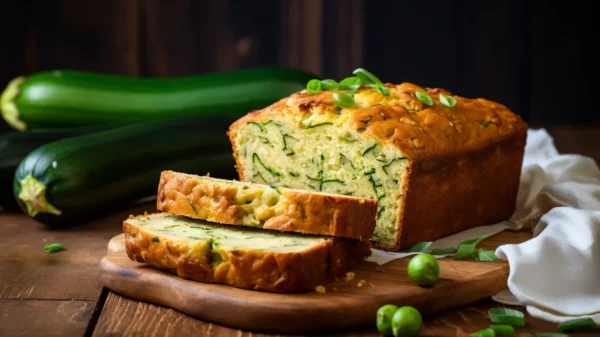Coffee is more than just a beverage; it is a cultural experience that varies from region to region. In Southeast Asia, two countries stand out for their unique and flavorful coffee traditions: Thailand and Vietnam. Thai coffee and Vietnamese coffee have gained popularity worldwide, captivating the taste buds of coffee enthusiasts with their distinct flavors and brewing methods.
In this in-depth blog post, we will delve into the world of Thai and Vietnamese coffee, uncovering the main differences and exploring the characteristics that make them truly exceptional. From the type of beans used to the brewing techniques and flavor profiles, we will leave no stone unturned in our quest to understand these Southeast Asian coffee delights.
Thai Coffee
Thai coffee has a long and rich history, deeply rooted in the country’s culture and traditions. Coffee cultivation in Thailand dates back to the early 20th century when Arabica coffee beans were introduced to the northern regions of the country. Today, Thailand is known for producing both Arabica and Robusta beans, each offering its own distinct characteristics and flavor profiles.
One of the defining features of Thai coffee is the brewing method. The traditional approach involves using a “phin” filter, a small metal device consisting of a perforated cup and a fitted lid with a drip tray. To prepare Thai coffee using the phin filter, coarse coffee grounds are placed in the filter, and hot water is poured over them. The water slowly drips through the grounds, extracting the flavors and oils to create a strong and flavorful brew.
The phin filter is an essential tool for Thai coffee lovers, as it allows for a slow and precise extraction process. The coffee brewed using this method is known for its robust and full-bodied flavor. The drip-by-drip brewing process ensures that every sip is rich and aromatic, delighting the taste buds of coffee enthusiasts.
In addition to the brewing method, Thai coffee stands out for its unique flavor profile. Arabica beans, with their milder and smoother characteristics, are often favored by Thai coffee drinkers. The resulting brew is known for its well-balanced acidity, medium body, and subtle hints of sweetness. Some coffee connoisseurs also enjoy the use of Robusta beans, which add a bold and earthy flavor to the cup.
Thai coffee is often enjoyed with sweetened condensed milk, which adds a creamy and indulgent touch to the beverage. However, individual preferences play a significant role in how Thai coffee is enjoyed. Some coffee drinkers opt for regular milk or even black coffee, savoring the unique flavors of the beans without any added sweetness.
Thai coffee is particularly popular during hot summer days, as the refreshing combination of bold flavors and cool temperatures provides a delightful respite from the heat. It is also worth noting that instant coffee has gained popularity in Thailand in recent years, providing a convenient and quick option for coffee lovers on the go.
For those who prefer a rich and intense coffee experience, Thai coffee is an excellent choice. Its unique brewing method and flavor profile make it a standout among coffee aficionados. Whether enjoyed at local coffee shops, street vendors, or brewed at home, Thai coffee offers a delightful and flavorful journey for your taste buds.
Vietnamese Coffee
Vietnamese coffee holds a special place in the hearts of coffee lovers around the world. Renowned for its strong and bold flavors, Vietnamese coffee has a distinct character that sets it apart from other varieties. The history of coffee in Vietnam dates back to the French colonial era in the 19th century when coffee cultivation was introduced to the country. Today, Vietnam is the second-largest coffee producer globally, with a focus on Robusta beans.
The brewing method used in Vietnam is quite unique and has become synonymous with Vietnamese coffee culture. Central to this brewing method is the “phin” filter, which consists of a small metal cup with a perforated base and a fitted lid. The phin filter is placed on top of a cup or glass, and the coffee grounds are added to the filter chamber. Hot water is then poured into the filter, and the lid is placed on top to allow for a slow and controlled extraction process. The coffee drips through the filter, resulting in a strong and concentrated brew.
One of the distinguishing features of Vietnamese coffee is the use of sweetened condensed milk. Traditionally, a layer of sweetened condensed milk is added to the cup or glass before brewing the coffee with the phin filter. As the hot water drips through the filter, it mixes with the milk, creating a rich and creamy texture. The combination of the bold coffee and sweetened condensed milk produces a delightful balance of flavors, with the sweetness of the milk complementing the strong and bitter notes of the coffee.
The flavor profile of Vietnamese coffee is characterized by its intensity and robustness. Robusta beans, which are commonly used in Vietnamese coffee, are known for their higher caffeine content and more bitter flavor compared to Arabica beans. This results in a strong and bold cup of coffee that packs a punch. Vietnamese coffee is often described as having a rich and dark flavor, with hints of chocolate and earthiness, making it a favorite among those who enjoy a strong and flavorful brew.
Vietnamese coffee is often enjoyed as an iced beverage, particularly during the hot and humid summer months. The famous Vietnamese iced coffee, known as “ca phe sua da,” is a refreshing treat that combines the strong brew of Vietnamese coffee with ice cubes. The result is a cooling and invigorating drink that highlights the unique flavors of Vietnamese coffee.
In recent years, Vietnamese coffee has gained international recognition, with specialty coffee shops around the world featuring it on their menus. The use of high-quality Robusta beans and the meticulous brewing process have elevated Vietnamese coffee to new heights, appealing to avid coffee lovers who seek a bold and distinct coffee experience.
In conclusion, Vietnamese coffee offers a bold and flavorful journey for coffee enthusiasts. Its unique brewing method, use of sweetened condensed milk, and the robustness of Robusta beans combine to create a captivating and memorable coffee experience. Whether enjoyed as an iced beverage or a piping hot cup, Vietnamese coffee delights the senses and leaves a lasting impression.
Comparison: Thai Coffee vs. Vietnamese Coffee
Now that we have explored the individual characteristics of Thai coffee and Vietnamese coffee, it’s time to compare and contrast these two Southeast Asian coffee traditions. While both Thai and Vietnamese coffee share some similarities in their brewing methods and cultural significance, there are also distinct differences that set them apart.
One of the key differences lies in the brewing methods and equipment used. Thai coffee relies heavily on the phin filter, which allows for a slow and controlled extraction process. The metal filter and drip tray ensure that the coffee grounds are evenly saturated, resulting in a strong and flavorful brew. On the other hand, Vietnamese coffee also utilizes the phin filter but with the addition of sweetened condensed milk. The combination of the coffee slowly dripping through the filter and mixing with the milk creates a unique and creamy texture.
Another significant distinction between Thai and Vietnamese coffee is the type of beans used. Thai coffee often favors Arabica beans, which are known for their milder and smoother flavor profiles. Arabica beans are typically grown at higher altitudes and have a more complex taste. In contrast, Vietnamese coffee predominantly utilizes Robusta beans, which have a higher caffeine content and a more robust and bitter flavor. Robusta beans thrive in the lowland regions of Vietnam, where they develop a unique character that adds depth to Vietnamese coffee.
Taste preferences also play a role in differentiating Thai coffee from Vietnamese coffee. Thai coffee tends to be sweeter, with the use of condensed milk and brown sugar adding a touch of sweetness to balance the bold flavors. The resulting brew is often described as having a medium body and a well-balanced acidity. Vietnamese coffee, on the other hand, leans towards a stronger and more bitter flavor profile, owing to the use of Robusta beans and the intensity of the brewing process. The addition of sweetened condensed milk provides a creamy and indulgent element that complements the strong coffee flavors.
Cultural and regional influences also shape the consumption of Thai and Vietnamese coffee. In Thailand, coffee shops and street vendors are popular gathering places for locals and tourists alike, offering a variety of coffee options to suit different tastes. Thai coffee production has also gained recognition in recent years, with specialty coffee shops showcasing the unique flavors and brewing methods of Thai coffee. In Vietnam, coffee is deeply ingrained in the culture, and street corner cafes are a common sight, serving as social hubs for people to gather and enjoy a cup of coffee. The Vietnam War also had a significant impact on coffee consumption in the country, as American soldiers introduced the habit of drinking coffee with sweetened condensed milk.
In conclusion, while Thai and Vietnamese coffee share similarities in their use of the phin filter and their cultural significance, there are notable differences in the type of beans used, flavor profiles, and brewing techniques. Thai coffee stands out for its use of Arabica beans, bold flavors, and options for alternative brewing methods. Vietnamese coffee, with its Robusta beans and unique combination of strong coffee and sweetened condensed milk, offers a distinct and intense flavor experience. Whether you prefer the rich and complex flavors of Thai coffee or the bold and robust taste of Vietnamese coffee, both traditions have their own charm and are worth exploring for coffee enthusiasts seeking a taste of Southeast Asia.
Thai Iced Coffee Recipe: A Refreshing Delight
Thai iced coffee, also known as “Oliang” or “Kafae Boran,” is a popular beverage enjoyed by locals and tourists alike in Thailand. This refreshing and indulgent drink is perfect for hot summer days or as a delightful treat any time of the year. In this section, we will explore the recipe for Thai iced coffee and the unique ingredients that make it so special.
To make Thai iced coffee, you will need the following ingredients:
- Coarsely ground Thai coffee beans (preferably Arabica for a milder flavor)
- Sweetened condensed milk
- Ice cubes
Here is a step-by-step guide to preparing Thai iced coffee:
- Start by brewing a strong cup of Thai coffee using the traditional phin filter. Place the filter on top of a glass or cup, add the desired amount of coffee grounds, and pour hot water over them. Allow the coffee to slowly drip through the filter, capturing all the flavors and aromas.
- While the coffee is brewing, prepare the serving glass by adding a generous amount of sweetened condensed milk. The amount of condensed milk can be adjusted according to personal preference for sweetness.
- Once the coffee has finished brewing, pour it over the condensed milk in the glass. Stir gently to ensure the coffee and condensed milk are well mixed.
- Next, add a handful of ice cubes to the glass. The ice cubes will not only cool down the drink but also enhance the refreshing experience.
- Give the drink a final stir to incorporate the melted ice and condensed milk, creating a creamy and flavorful Thai iced coffee.
Thai iced coffee offers a unique and satisfying flavor profile. The combination of the strong and bold coffee with the sweet and creamy condensed milk creates a harmonious balance of flavors. The addition of ice cubes adds a cooling element, making it the perfect beverage to enjoy on a hot day.
The popularity of Thai iced coffee has spread beyond Thailand’s borders, with many coffee shops and enthusiasts around the world featuring this delightful drink on their menus. It has become a symbol of Thai coffee culture and a favorite among those seeking a flavorful and refreshing coffee experience.
For those who prefer a non-dairy option, Thai iced coffee can also be made with coconut milk or fresh milk. This variation adds a unique twist to the drink, providing a creamy texture and a hint of coconut flavor.
Whether enjoyed at a local coffee shop in Thailand or prepared at home, Thai iced coffee offers a delightful and invigorating experience. Its unique brewing methods, bold flavors, and creamy sweetness make it a favorite choice for coffee lovers seeking a taste of Thailand’s vibrant coffee culture.
The Significance of Coffee in Thai and Vietnamese Culture
Coffee holds a significant place in the cultural fabric of both Thailand and Vietnam. From the bustling streets of Bangkok to the vibrant cities of Hanoi and Ho Chi Minh City, coffee shops and street vendors are integral parts of the local culture, serving as social hubs and gathering places for people from all walks of life.
In Thailand, coffee has experienced a surge in popularity in recent years, with specialty coffee shops popping up in urban centers and remote areas alike. These establishments not only serve as places to enjoy a cup of coffee but also act as platforms for showcasing Thai coffee’s unique flavors and brewing methods. Coffee lovers can immerse themselves in the rich aromas and flavors of Thai coffee, exploring the nuances and complexities that make it a standout in the global coffee scene.
Thai coffee culture is known for its diversity and adaptability. While traditional brewing methods using the phin filter are still widely practiced, coffee enthusiasts have also embraced alternative brewing techniques such as French press and drip coffee. This openness to experimentation and innovation has allowed Thai coffee to evolve and appeal to a wider range of tastes and preferences.
In Vietnam, coffee has a long and storied history, deeply intertwined with the country’s identity. The coffee culture in Vietnam emerged during the French colonial period, when coffee plantations were established in the central highlands. Over time, coffee became a staple in Vietnamese households and a symbol of national pride.
Vietnamese coffee shops, often found on street corners or tucked away in narrow alleyways, are vibrant and bustling spaces filled with the aroma of freshly brewed coffee. These establishments offer a unique atmosphere where locals and tourists alike can gather to socialize, discuss business, or simply enjoy a cup of coffee while watching the world go by.
The Vietnam War also played a significant role in shaping coffee consumption in the country. With limited access to resources, Vietnamese people had to find creative ways to make their coffee last longer. This led to the popularization of the use of sweetened condensed milk as a way to stretch the coffee supply while adding a touch of sweetness to balance the strong and bitter flavors. The tradition of drinking coffee with sweetened condensed milk has continued to this day, becoming an integral part of Vietnamese coffee culture.
Both Thai and Vietnamese coffee cultures reflect the importance of community and social connection. Coffee shops and street vendors serve as meeting places where people from all walks of life come together to share stories, discuss current events, or simply enjoy a cup of coffee in the company of others. These spaces foster a sense of belonging and provide a platform for cultural exchange and connection.
In conclusion, coffee plays a vital role in the cultural fabric of both Thailand and Vietnam. From the traditional brewing methods to the unique flavors and communal spaces, Thai and Vietnamese coffee cultures offer a glimpse into the rich history and vibrant present of these Southeast Asian countries. Exploring the coffee traditions of Thailand and Vietnam is not just about savoring a delicious beverage; it is also an opportunity to immerse oneself in the local culture, connect with others, and experience the warmth and hospitality of these captivating nations.
Exploring the Rise of Specialty Coffee in Thailand and Vietnam
In recent years, the coffee scene in both Thailand and Vietnam has witnessed a significant shift towards specialty coffee. Specialty coffee refers to high-quality coffee that is sourced, roasted, and brewed with meticulous attention to detail, resulting in a superior and distinctive coffee experience. This rise in specialty coffee has not only elevated the coffee culture in these Southeast Asian countries but also put them on the map as destinations for coffee lovers seeking unique and exceptional brews.
Thailand, in particular, has seen a surge in specialty coffee shops and micro-roasters, with a focus on showcasing the diverse flavors and characteristics of Thai coffee. These establishments prioritize sourcing premium Arabica beans from local farmers, supporting sustainable and ethical practices. By working closely with coffee farmers, Thailand’s specialty coffee industry aims to highlight the unique terroir of different regions, celebrating the country’s rich coffee heritage.
The specialty coffee movement in Thailand has also brought attention to alternative brewing methods and equipment. While the phin filter remains a staple in Thai coffee culture, specialty coffee shops have introduced techniques such as pour-over and AeroPress, allowing coffee enthusiasts to experience the nuances and complexities of Thai coffee in new and exciting ways. These methods require precision and expertise, resulting in a cup of coffee that showcases the full potential of the beans.
Similarly, Vietnam has experienced a growing interest in specialty coffee, particularly in cities like Ho Chi Minh City and Hanoi. Coffee shops dedicated to specialty coffee have emerged, offering a curated selection of beans from different regions of the country. These establishments prioritize quality and craftsmanship, often working directly with local farmers to source the best Robusta beans and promote sustainable practices.
In addition to the emphasis on sourcing high-quality beans, specialty coffee in Vietnam also explores different brewing methods beyond the traditional phin filter. Pour-over, siphon, and espresso-based drinks have gained popularity, allowing coffee lovers to discover a wider range of flavors and aromas in Vietnamese coffee. This newfound appreciation for specialty coffee has not only attracted locals but also enticed visitors from around the world to explore the vibrant coffee culture of Vietnam.
The rise of specialty coffee in both Thailand and Vietnam has contributed to a deeper understanding and appreciation of the complexities of coffee production. Coffee drinkers are now more aware of the importance of ethical sourcing, sustainable farming practices, and the impact of terroir on flavor profiles. By embracing specialty coffee, Thailand and Vietnam have positioned themselves as key players in the global coffee industry, showcasing their unique offerings and captivating coffee enthusiasts worldwide.
In conclusion, the emergence of specialty coffee in Thailand and Vietnam has brought a new level of sophistication and diversity to their respective coffee cultures. From the meticulous sourcing of beans to the exploration of alternative brewing methods, specialty coffee has opened doors for coffee lovers to experience the nuanced flavors and complexities that Thai and Vietnamese coffee have to offer. Whether you find yourself in a specialty coffee shop in Bangkok or a hidden gem in Hanoi, the journey into the world of specialty coffee in Thailand and Vietnam promises to be a delightful and enriching experience for avid coffee lovers and curious newcomers alike.
Embracing the Diversity of Thai and Vietnamese Coffee
In this exploration of Thai coffee and Vietnamese coffee, we have discovered the unique characteristics, brewing methods, and cultural significance that make them beloved beverages in Southeast Asia and beyond. Thai coffee, with its bold flavors, diverse brewing techniques, and use of Arabica beans, offers a delightful and robust coffee experience. Vietnamese coffee, on the other hand, captivates with its strong and distinct flavors, the use of Robusta beans, and the iconic combination of sweetened condensed milk.
The brewing methods, choice of beans, and flavor profiles of Thai and Vietnamese coffee showcase the rich diversity of coffee culture in these two countries. Whether it’s the slow drip of Thai coffee through a phin filter or the intense aroma of Vietnamese coffee brewed with the same method, each sip tells a story of tradition, craftsmanship, and the love for a good cup of coffee.
As coffee enthusiasts, we are fortunate to have the opportunity to explore the unique flavors and brewing techniques of Thai and Vietnamese coffee. Whether we find ourselves in the bustling streets of Bangkok or the vibrant cities of Vietnam, we can immerse ourselves in the local coffee culture, savoring the distinct aroma, taste, and textures that these beverages offer.
It is important to remember that the choice between Thai coffee and Vietnamese coffee ultimately comes down to personal preference. Some may prefer the bold and robust flavors of Thai coffee, while others may be drawn to the strong and bitter notes of Vietnamese coffee. The beauty of coffee lies in its ability to cater to a wide range of taste preferences, ensuring that there is a perfect cup for every coffee lover.
As we conclude our journey through the world of Thai and Vietnamese coffee, let us celebrate the richness and diversity of these Southeast Asian coffee traditions. Whether you find yourself enjoying a cup of Thai coffee in a bustling coffee shop or sipping Vietnamese coffee on a street corner, take a moment to appreciate the unique flavors, brewing techniques, and cultural significance that these beverages represent. Coffee has the power to bring people together, bridge cultures, and create moments of joy and connection. So, let us raise our cups and toast to the wonderful world of Thai and Vietnamese coffee. Cheers!
The Ongoing Debate: Thai Coffee vs. Vietnamese Coffee
The debate between Thai coffee and Vietnamese coffee is one that has sparked passionate discussions among coffee enthusiasts and connoisseurs. While both varieties offer their own unique flavors and brewing techniques, coffee lovers often find themselves drawn to one side of the debate. Let’s delve deeper into the factors that contribute to the ongoing discussion.
One of the main points of contention is the choice of beans. Thai coffee predominantly uses Arabica beans, known for their milder flavor and smoother texture. Arabica beans are often associated with a more complex taste profile, offering nuances of acidity, sweetness, and subtle notes that coffee enthusiasts appreciate. On the other hand, Vietnamese coffee relies heavily on Robusta beans, which are known for their higher caffeine content, bold flavors, and earthy undertones. Robusta beans provide a strong and robust coffee experience that appeals to those who prefer a more intense and bitter cup.
Brewing methods also play a significant role in the Thai coffee vs. Vietnamese coffee debate. Traditional Thai coffee brewing involves the phin filter, which allows for a slow and controlled extraction process. The result is a strong and flavorful cup of coffee that captures the essence of Thai coffee culture. Vietnamese coffee, too, utilizes the phin filter, but with the addition of sweetened condensed milk, creating a unique and creamy texture. The brewing process and the addition of condensed milk contribute to the distinct flavor profile of Vietnamese coffee.
Another aspect to consider is personal preference. Some coffee drinkers may lean towards Thai coffee for its milder flavor and smoother taste, enjoying the subtleties and complexities that Arabica beans offer. Others may find themselves drawn to the bold and robust flavors of Vietnamese coffee, appreciating the strong and bitter notes that Robusta beans bring to the cup. Ultimately, the choice between Thai coffee and Vietnamese coffee comes down to individual taste preferences and the desired coffee experience.
It is important to note that the Thai coffee vs. Vietnamese coffee debate is not a competition to determine which is superior. Both varieties have their own distinct characteristics and loyal followings. The beauty of coffee lies in its ability to cater to a wide range of tastes and preferences, ensuring that there is a perfect cup for every coffee lover.
In the end, the Thai coffee vs. Vietnamese coffee debate is a matter of personal preference and appreciation for the unique flavors, brewing methods, and cultural significance that each brings to the table. Whether you find yourself sipping a cup of Thai coffee in the bustling streets of Bangkok or enjoying a Vietnamese coffee in a cozy café in Hanoi, take the time to savor the experience and appreciate the rich diversity that the world of coffee has to offer.
So, the next time you find yourself engaged in the Thai coffee vs. Vietnamese coffee debate, remember that it is a celebration of the rich coffee cultures of Southeast Asia and the ability of coffee to bring people together in appreciation of the art and science of this beloved beverage.
Embracing the Diversity of Coffee Culture
The debate between Thai coffee and Vietnamese coffee ultimately highlights the diversity and richness of coffee culture in Southeast Asia. Rather than pitting one against the other, it is important to appreciate the unique qualities and characteristics that each brings to the table. Coffee, like any culinary art, is a reflection of the people, traditions, and terroir of a region, and both Thai and Vietnamese coffee exemplify this.
For coffee lovers, the Thai coffee vs. Vietnamese coffee debate offers an opportunity to explore and expand their palate. It allows for the discovery of new flavors, brewing methods, and cultural experiences. Whether you find yourself drawn to the bold and robust flavors of Vietnamese coffee or the milder and complex taste of Thai coffee, the journey of exploring these Southeast Asian coffee traditions is a delightful and enriching one.
It is important to remember that taste is subjective, and what may appeal to one person may not resonate with another. The beauty of the coffee world lies in its diversity and the multitude of choices available. With each cup, we embark on a sensory adventure, discovering the flavors, aromas, and textures that speak to our individual preferences and ignite our passion for coffee.
So, instead of focusing on which is better, let us celebrate the unique experiences that Thai coffee and Vietnamese coffee offer. Let us embrace the diversity of coffee culture, appreciating the different brewing methods, flavors, and cultural significance that each represents.
Whether you find yourself sipping Thai coffee in a bustling Bangkok café or enjoying Vietnamese coffee in a quaint Hanoi street corner, take a moment to savor the experience. Let the flavors dance on your palate, the aromas transport you to far-off lands, and the culture immerse you in the rich tapestry of coffee traditions.
In the end, the Thai coffee vs. Vietnamese coffee debate is a reminder of the beauty and complexity of the coffee world. It is a celebration of the diverse choices available to us as coffee enthusiasts. So, let us raise our cups to the vibrant and captivating coffee cultures of Thailand and Vietnam, and may our love for coffee continue to unite us in appreciation for this remarkable beverage.










